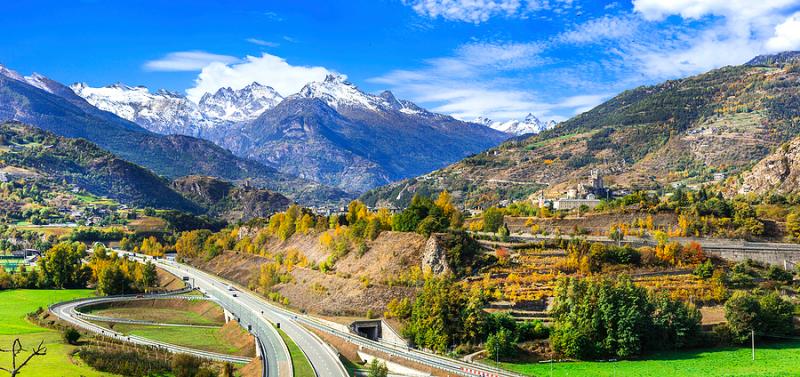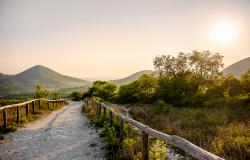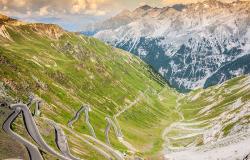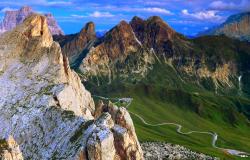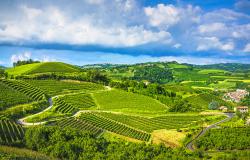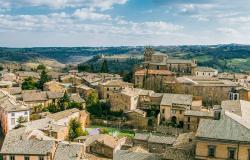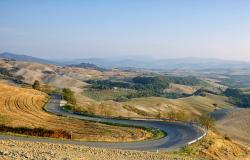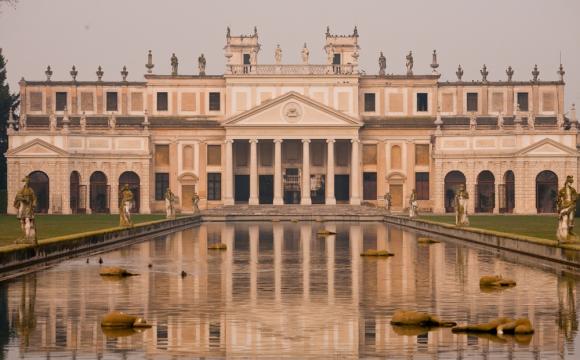Picturesque villages, unexpected art treasures, incredible landscapes and gourmet stops: a road trip in Italy offers the best of the country. And because you’re driving, you can savor it at your own pace, stopping wherever you please and where curiosity leads you.
This is part two of a multi-part series about road tripping in Italy, as we have many itinerary ideas for you, from north to south!
Aosta Valley
Castles, snow-capped mountains, Roman history and food: a road trip in Aosta Valley, Italy’s smallest region, offers this, plus plenty of fun for the keen driver, who will enjoy the mountain roads with their hairpin bends, climbs and tunnels.
The three-day itinerary we present here starts at Bard Fort, a fortified complex built in the 19th century by the House of Savoy on a rocky prominence above Bard; today, it houses a cultural center and, in the summer, the main courtyard hosts musical and theatrical performances.
Continue on to Arnad, which merits a stop to taste its famous lard and local bread.
Continuing north, you will reach Issogne Castle, in the lower Aosta Valley, one of the most famous manors of the region, noteworthy for its fountain in the form of a pomegranate tree and its decorated portico, a rare example of medieval Alpine painting, featuring a frescoed cycle of scenes of daily life from the late Middle Ages. On the opposite bank of the Dora Baltea river is Verrès Castle, au austere 14th-century fortress, standing on a rocky promontory. It is considered one of the most impressive medieval buildings in the area, and was one of the first examples of a castle built as a single structure rather than as a series of buildings enclosed in a circuit wall.

[Roofs of typical houses and the castle in Verres, Aosta Valley.]
Proceeding for another 40 kilometers, you will reach La Magdeleine, where you should stop to take a walk along the ‘Path of the Mills’, to admire eight ancient mills, some still working and connected through a creek, used in the past to make flour for the rye bread made in the villages nearby.
You will then reach the region’s capital, Aosta, definitely worth a stop to immerse yourself in Roman history: see the Theater, the Arch of Augustus, founder of the city in 25 BC., and the Porta Prætoria. Pay a visit to religious complex of Sant’Orso, with the Romanesque bell tower, the early Christian basilica of San Lorenzo and its cloister.
Continuing south, you reach the mines of Cogne, a beautiful testimony of industrial archaeology, and the visitor center of the Gran Paradiso National Park, Alpinart, which explain the history of the mine.
Once you head back north, head for Courmayeur, where you can take the spectacular SkyWay Monte Bianco, a cable car whisking you up to Punta Helbronner, 3,466 meters high. From its panoramic terrace, you can enjoy an extraordinary 360° degree view of many ‘four-thousanders’ of the Western Alps: Mont Blanc, Monte Rosa, the Matterhorn, Gran Paradiso and the Grand Combin.

[Cabin of cableway Skyway Monte Bianco on the Italian side of Mont Blanc.]
Western Liguria
The westernmost part of Liguria is ideal for those looking for a mix of sea and mountains, as a road trip here alternates stretches along the coast with detours into forests, mountains and inland villages. The same variety will be found on the table, with seafood dishes, such as the famous prawns of Sanremo and brandacujùn, a dish typical of Ligurian cuisine made with potatoes and stockfish, and ingredients of the interior, including vegetables, cheeses and goat meat.
This three-day itinerary (about 80 kilometers) starts from the beaches of Ospedaletti and Bordighera (which is only 20 kilometers from France - you can indeed see the French coast from there), two picturesque villages of the Riviera dei Fiori (Coast of Flowers); since Bordighera is built where the Maritime Alps plunge into the sea, it benefits from the Foehn effect which creates a special microclimate that has warmer winters.
You then leave the coast to go up the Val Nervia and reach Dolceacqua, which French Impressionist painter Claude Monet made the subject of some of his famous paintings; he called the village a “jewel of lightness.” Dolceacqua (literally, ‘sweet water’) is a typical medieval village on the hills of the Ligurian hinterland between Ventimiglia and Bordighera. The Castle of the Doria overlooks the old part of the village.

[Dolceacqua, Liguria]
Another village worthy of a stop, also located in the Nervia Valley, is Apricale, with its Castello della Lucertola, now home to the town’s history museum, once owned by the counts of Ventimiglia and the powerful Doria family, whose members included six Genoa Doges. The village attracts musicians, actors and writers for the many cultural events it hosts in the narrow streets of its medieval center.

[Apricale, Liguria]
Continue towards Perinaldo, the birthplace of the 17th-century Italian naturalized French astronomer Giovanni Domenico Cassini; the town has an important astronomical observatory named after him. The village is also famous for the extra virgin olive oil produced with Oliva taggiasca and a type of artichoke that is a Slow Food presidium.
From Perinaldo, go up towards Bajardo, a medieval village which stands at an altitude of 900 meters where you can see the remains of the old church of San Nicolò, and admire a beautiful view as you’re standing on one of the ridges of the Maritime Alps.
You then descend back towards the coast, stopping in Ceriana, built on the site of a Roman fort, and Bussana Vecchia, an enchanting ‘artist’ village; consider spending a night in this unique village perched on a hill. Almost destroyed by an earthquake in 1887 and subsequently abandoned for decades, it was brought back to life by artists, Italian and foreign, and hippies, who settled here. Today, it’s full of artisan shops and art ateliers set among the medieval alleys.
The tour ends in Sanremo, the town mostly famous for its Casino and Ariston Theater, which every year hosts the Festival di Sanremo (Italian Song Festival). Go beyond the usual attractions and explore La Pigna, the real historic center, all the way up to the Sanctuary of the Madonna della Costa, the main religious building in town; Villa Nobel, an elegant villa in Moorish style named after Alfred Nobel, the inventor of dynamite and creator of the Nobel Prize; and the botanical gardens of Villa Ormond, which feature a Japanese garden, palm trees and an ancient olive grove.
